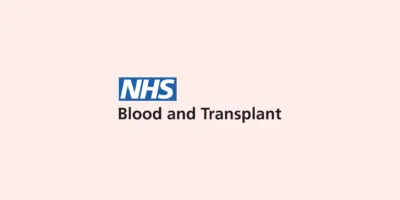29 Sep 2022
- Public Services
Mind the gaps – how to get more from Discovery and Alpha
Following our recent talk at 2022’s SDinGov conference, Mark Skinner and I thought we’d share our approach to bringing research and design closer together by bridging the gap between Discovery and Alpha.
-
Amanda Payne
Experience Strategy Director
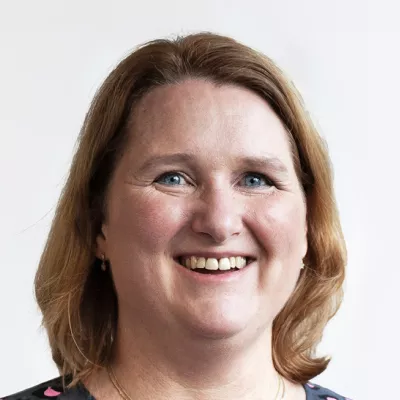
Have you ever found yourself at the beginning of an Alpha stage realising that you’re missing a key insight, or struggling to make sense of a Discovery report months after it was delivered?
By following the prescribed phases of service delivery, there’s a risk of being bound by the definitions of each phase, thereby missing key opportunities to deepen understanding and gain ‘buy-in’.
Discovery to Live
At cxpartners, we have almost 20 years of experience delivering services from Discovery to Live (and beyond).
We’re looking specifically at what happens in the space between Discovery and Alpha – getting this right helps set up the success of the service or product before moving into the later phases of design and development.
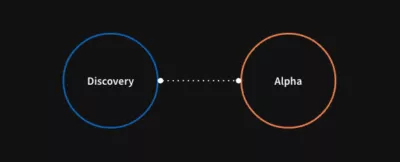
In our experience, it’s easy to lose things in the gaps when Discovery doesn’t set the service up to be ‘Alpha ready’. For example, if too much time passes between each phase then both policy goals and technology can change. Or perhaps the Discovery phase of a project was rushed, not documented sufficiently, uncovered a huge “cloud of stuff” or was just too narrow or too broad in its focus.
A change in teams, suppliers or stakeholders can also affect the transition between Discovery and Alpha.
All of these factors not only affect the Alpha phase but the Beta phase as well. If you don’t focus on the right hypotheses during the design phase then it’s all too easy to waste both time and money. You can risk the Alpha assessment. You could end up needing to do more prototyping and designing in Beta, while you still try to figure out the fundamentals.
We are big proponents of the tenet that ‘Discovery never ends’. We should always be learning and be prepared to uncover new findings. Our proposed approach is not meant to counter or replace this.
But we have identified circumstances where a wide gap exists between Discovery and Alpha and want to share some suggested ways to identify, mitigate and move forward.
Discovery mindset in an alpha phase
If you’ve ever found yourself in an Alpha situation where there’s no clear way forward into the design sprints, don’t panic. Adopting a Discovery mindset in the early stages of Alpha will help to reset and redefine so that you:
- Have a clear plan that gives you a view of the whole service
- Can identify and test your riskiest hypotheses
- Have documented and prioritised relevant user needs
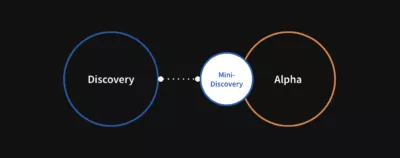
If you have obvious gaps, this should be pretty straightforward. You can build in time for more open research with users – and even combine this research with co-design or prototype testing.
This may also involve revisiting service mapping (both as-is and to-be), re-engaging stakeholders, talking to new user groups and planning for the Alpha design sprints.
All of this can be done and is effective. However, it can make Alpha feel particularly pressured – squeezing design time and ‘crunching’ the Alpha assessment and Beta prep. You risk feeling on the back foot for the rest of the programme.
As we’ve already said,squeezing more into the Alpha phase isn’t ideal.
So, we’ve got another suggestion. One that ticks the boxes, without impacting alpha, lines up with GDS standards, but also pushes them that little bit further.
Discovery+
There were a few critical factors we wanted from a new approach. For example, we wanted to:
- Be more proactive instead of reactive
- Feel more confident that the upfront Discovery work was in a good enough place that we could move forward at pace
- Be able to get going and fast!
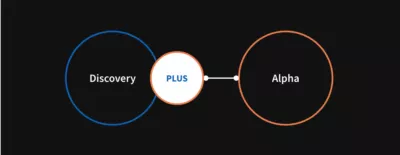
In short, it makes sense to spend time at the end of the Discovery phase putting ideas down, exploring the solution space, and beginning to plan what could and should be explored in Alpha.
Discovery+ aligns to the GDS service manual, which says that “by the end of Discovery you should have a list of ideas that you’d like to test in Alpha, and an idea of which one you’d like to test first”.
But our approach goes above and beyond this. By making sure we have captured the Discovery team’s thinking – regardless of whether they will continue the project into Alpha – allows the team who have been living with the problem space for a number of weeks or months to interrogate whether we’re Alpha ready or not.
This approach allows a team who have been living with the problem space for a while, to interrogate whether they’re Alpha ready or not. It focuses on using the knowledge of the Discovery team to help identify gaps, and to capture the right information so that things can move quickly in the next phase.
In conclusion, we’ve given two methods for solving the gaps:
- Mini-discovery to kick off alpha or
- Discovery+ to wrap up discovery
We recognise that service design is messy, non linear, dependent on cycles of funding and changing stakeholder prioritistion. We also recognise that teams cannot always move seamlessly from Discovery to Alpha. And, when these gaps start to form, it’s best to lean in and acknowledge them – to think creatively and work outside of a “standard methodology” to achieve the best outcomes for your service.
If you’d like to know more about delivering successful Discovery and Alpha projects, please do contact myself or Mark Skinner.


